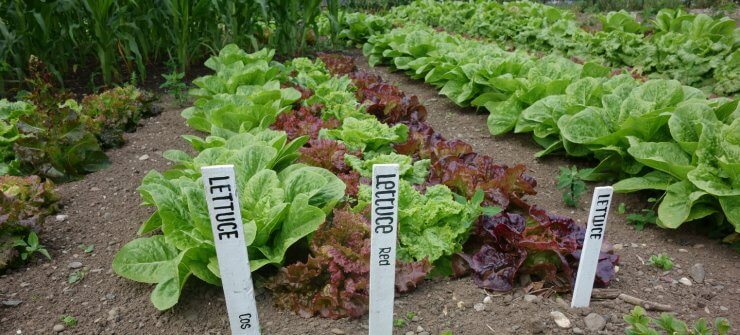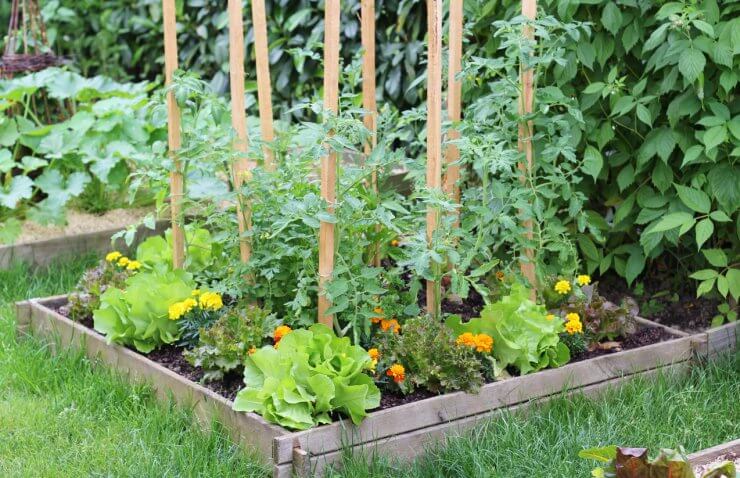
Rows of different varieties of lettuce planted in the ground.
Lettuce is a cool-weather crop, and can even survive a light frost. In most cases, it has a strong dislike of heat—although you can find some heat-tolerant varieties.
Lettuce need lots of sunshine in order to thrive. While it will produce best in full sun, lettuce also appreciates some protective shade if the weather turns hot. It does best in well-drained soil with a pH of 6.0 to 7.0. Remember, lettuce hates to have wet feet!
Planting
The easiest way to plant lettuce is to sow the seeds directly in the ground, after your last hard frost and as soon as the soil is workable. However you decide to plant it—in rows or in a patch—plant your seeds 1/8-inch deep and about an inch apart.
Lettuce Spacing
How you space your lettuce depends on your gardening style (rows? patch?) and how early/often/soon you plan to harvest your lettuce. Lettuce is one of those crops you can harvest as soon as the leaves look tasty, and you can keep coming back for more.
The other planning you should consider is whether you’re going to do succession planting—sowing new seeds every few weeks—to extend your harvest season.
Each variety will require slightly different spacing, so check the specific requirements of each cultivar. Romaine lettuce needs more space between heads than looseleaf lettuce does, for instance.
Companion Planting & Intercropping

Lettuce growing alongside tomatoes and flowers in a garden
Companion planting is a great way for plants to help each other and, in some cases, to save you some time and aggravation in the garden. Aphids are a notorious pest of lettuce (and many other crops). Plant garlic or chives around, near, or between your lettuce plants to deter aphids. Another good companion planting option is alyssum: it attracts syrphid flies, which happen to have a particular taste for aphids. Mint repels slugs, which like to munch on lettuce. But mint is an opportunistic spreader, and it needs to be planted in an area that has a physical barrier, like pavement or bricks.
Intercropping lets you take advantage of the different root lengths of your garden crops. Lettuce has shallow roots, so consider interplanting your lettuce area with a more deep-rooted crop like carrots, parsnips, or tomatoes. Tomatoes offer an extra side benefit: they can provide shade to your lettuce in the heat of the day.
Other intercropping options include:
- beets
- broccoli
- brussels sprouts
- cabbage
- cauliflower
- kale
- kohlrabi
- onions
- radishes
- strawberries
Intercropping (also called interplanting) takes some planning, but it can be especially helpful if you have limited gardening space. You don’t have to plant another crop; you could plant flowers instead.
How do you plant your lettuce? What criteria for site selection has worked for you? Do you include companion plants with your lettuce plants, or plant another crop among your lettuce plants? Please share your ideas with us.


 Previous
Previous

